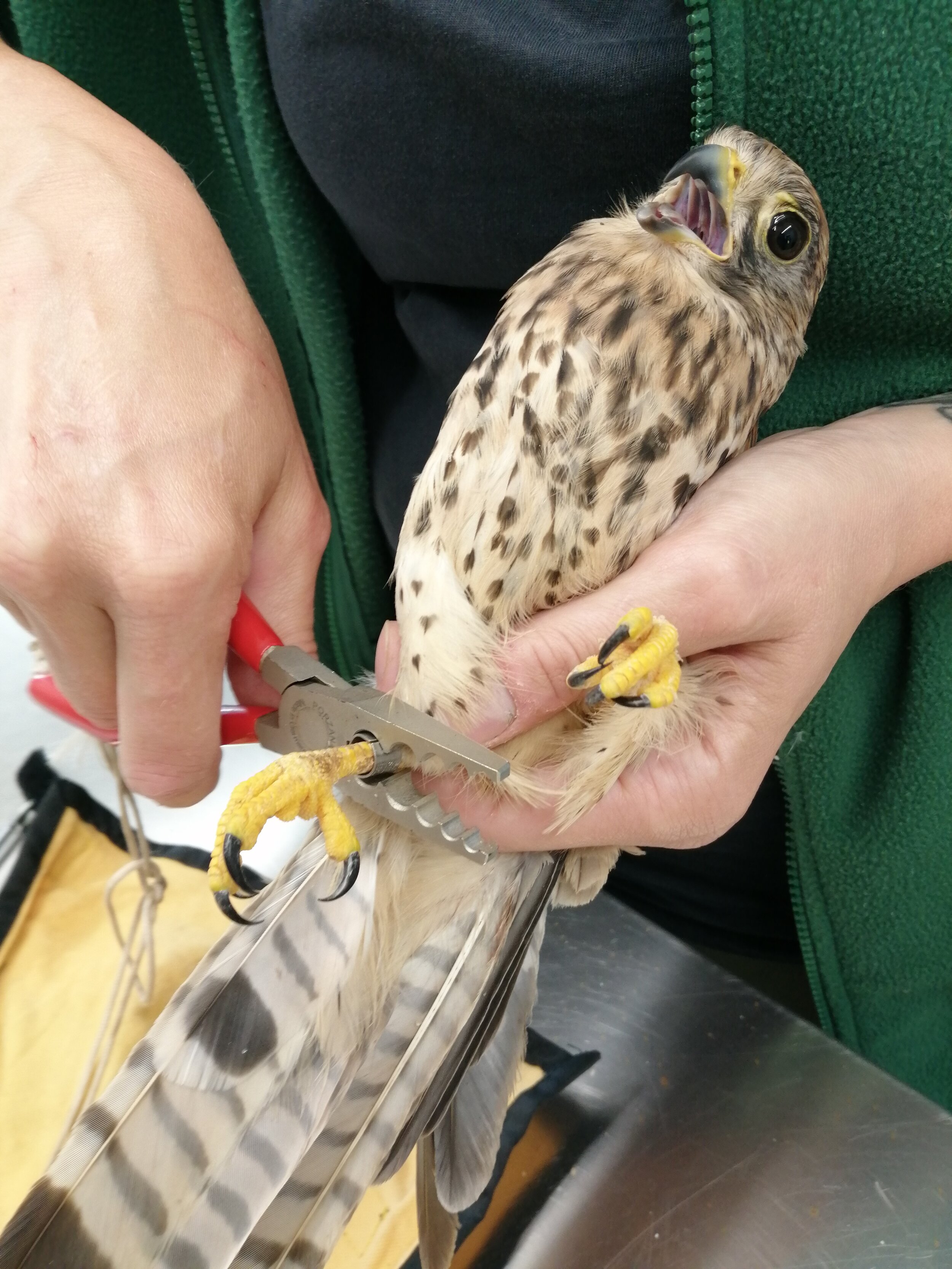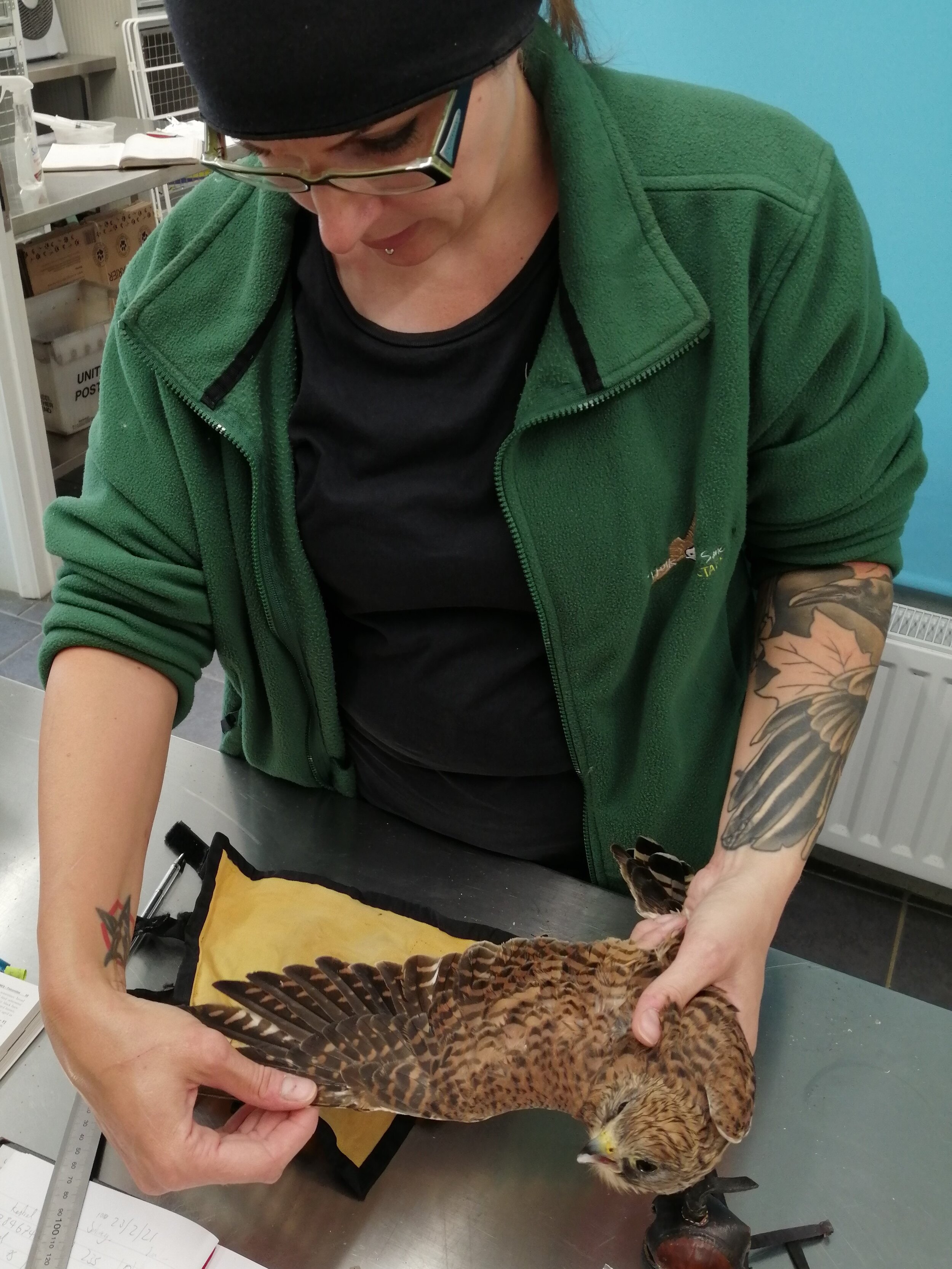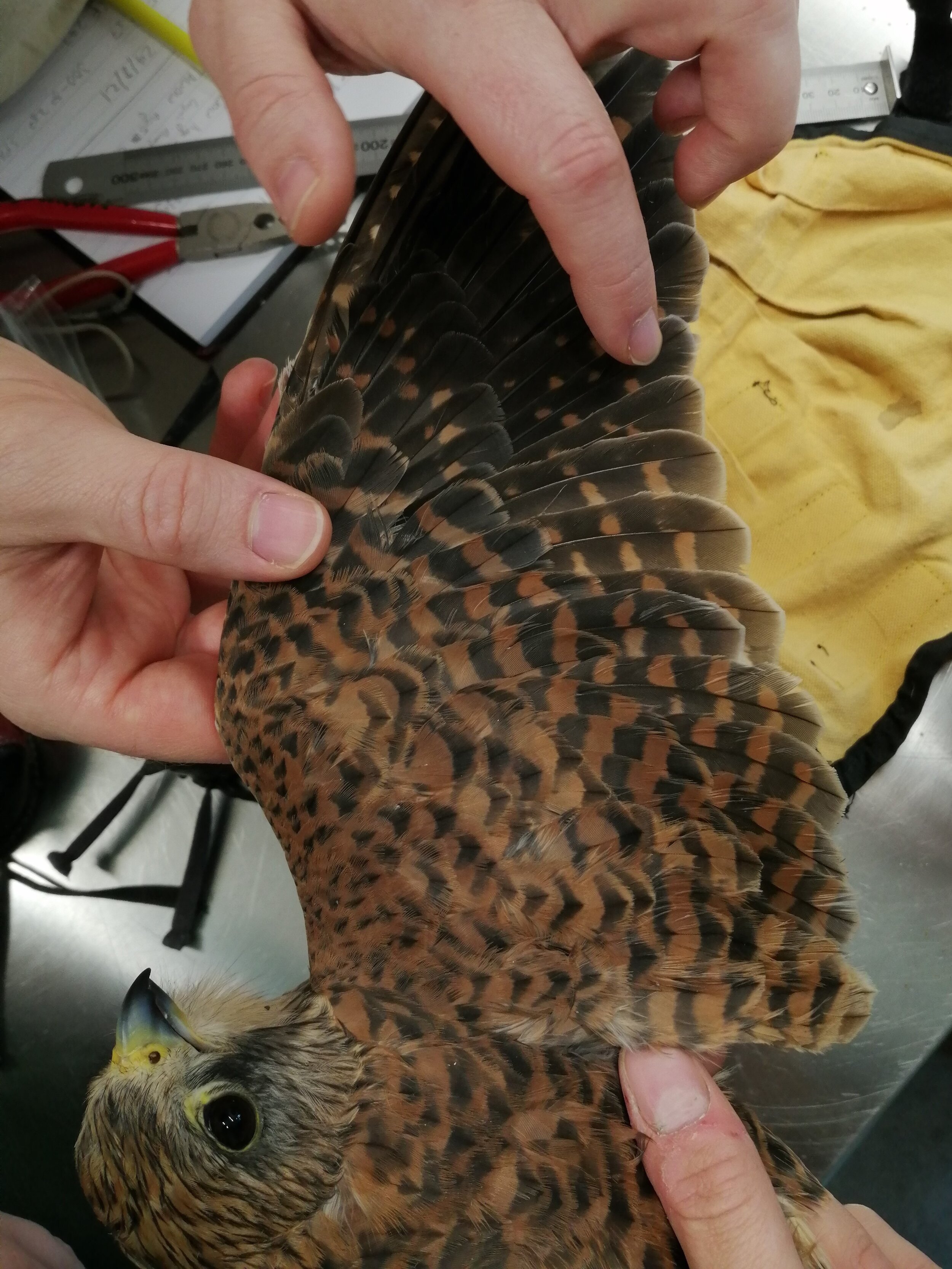Regular followers of this blog may have seen that in the past 12 months we’ve started ringing some of our hospital birds before release.
Jess ringing her first bird with a BTO ring.
The British Trust for Ornithology coordinates the British Bird Ringing Scheme, which sees volunteers around the UK ringing wild birds to help monitor populations, migration and general health of our birds.
By ringing birds that have been taken into care, we have a chance of assessing whether these birds survive after release.
Hugh Hanmer, who is a Research Ecologist with the BTO, is also a licenced ringer and has agreed to run the project on our behalf, and to train our Falconer Jess, who runs the Hospital, on how to ring raptors. Our Education Officer Susan is already a bird ringer, but still needs some experience with raptors, so she will also be learning how its done.
Each species has a different ring size, which are secured using specialist equipment.
Hugh says “Bird ringing is an important part of wild bird monitoring and in the UK is done by volunteers adding metal leg rings with unique numbers to birds. By adding this ring it makes a bird an individual that can be identified in the future if it is ever found again, so we can see where it goes and how long it lives. At the same time we, where possible, age, sex and take biometrics such as wing length and weight to get an idea of their condition. All this data together is very important for trying to monitor and protect our wild bird species and identify problems for them. Usually this is done on birds out in the wild but it is especially interesting and useful ringing rehabilitated wild birds prior to their release as it gives us a chance to see how well rehab birds do after returning to the wild as well contributing to our wider monitoring.”
Jess and Hugh measuring the wing length of the Kestrel. This can help determine sex and race in some species, as well as being a useful guide for overall health.
Jess says “I’m interested in learning a new skill which will hopefully lead to positive stories about our released hospital birds. By ringing the birds before release, there is a chance that we might encounter them again in the future, to show that our little Raptor Hospital here at Suffolk Owl Sanctuary, is successful.”
Jess carefully holding the wing open to check the birds age - Kestrels retain some juvenile feathers into their second year which look different to adult type feathers.
Hugh showing Jess the contrast between the different generations of primary and secondary feathers.
The Kestrel was returned to its aviary for a day or two before it was collected for release. The ring is the equivalent weight to wearing a watch or bracelet, and most birds don’t even notice their new accessory upon release.






